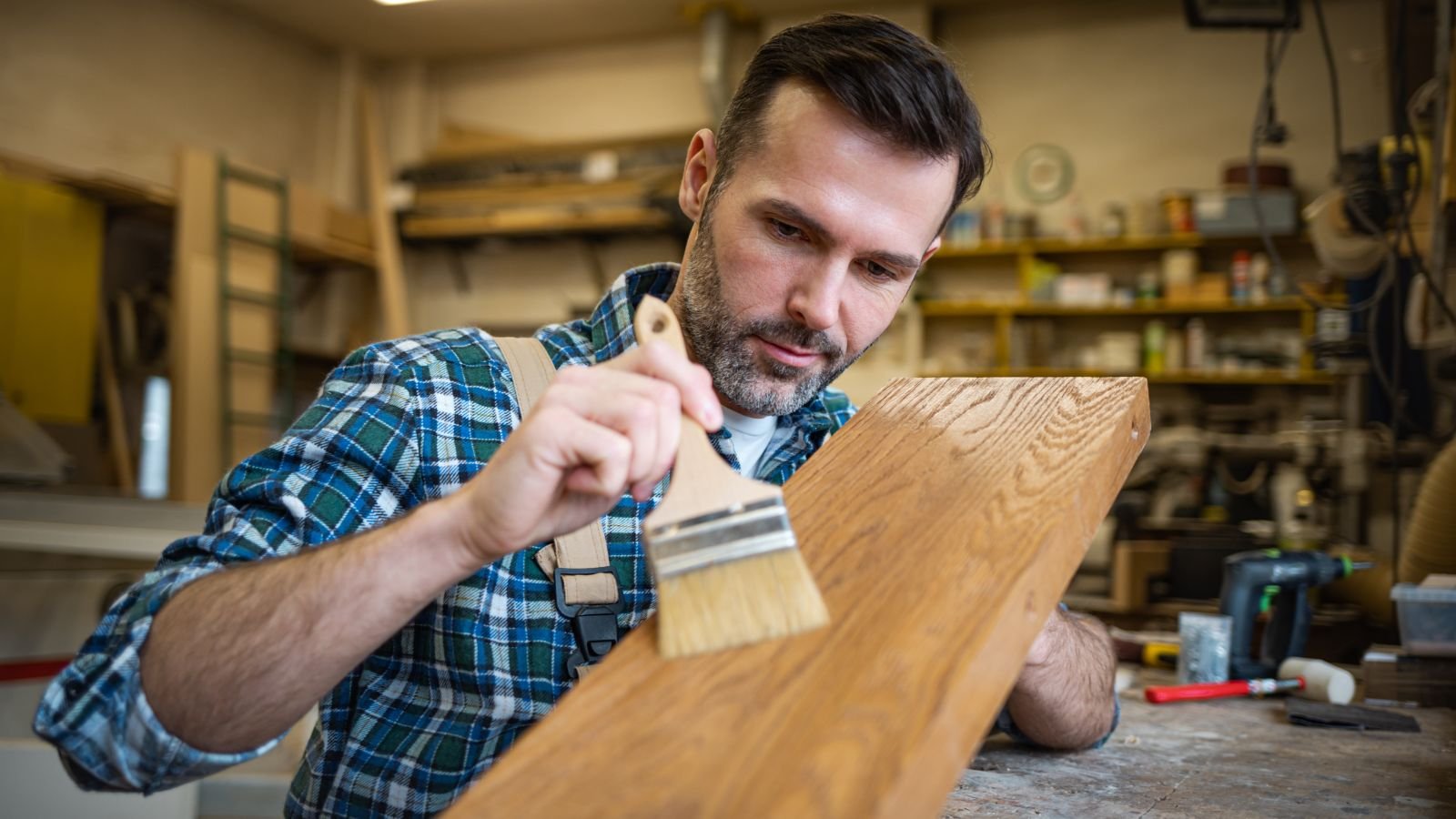A hundred years ago, people used clever hacks to make life easier, just like we do today. Back then, they didn’t have modern technology or advanced gadgets, but they still found smart solutions to everyday problems. These old tricks are still useful and can be easily adapted to our lives today.
A list of 16 home hacks that were used 100 years ago and are still relevant.
Floor Ruler

Draw a giant ruler right on your workshop floor using a permanent marker. It won’t be perfect for super-precise cuts. However, for rough measuring jobs, it’ll save you a lot of time. Redraw the lines whenever they start to fade.
Lawn Fertilizer Markers

To avoid streaks of pale and dark grass when fertilizing your lawn, use two short pieces of wood as a marker. Place a marker at the edge of your fertilized row each time you start a new pass. Aim for the marker while spreading fertilizer, and move it to the new edge each time you turn. This method ensures even coverage and works with both drop and broadcast spreaders.
Finding a Small Thing

Losing a tiny thing on the floor can be frustrating. To find them, put a flashlight on the ground and sweep the light beam slowly across the floor. Look for the small shadow of the lost item. That’ll help you find it quickly.
A Hole in a Hollow Door

Fill the hole completely with spray foam insulation; make sure it’s almost level with the door surface. Let it dry for a day. The foam will puff up a bit as it dries. Once dry, use a razor blade to carefully cut off the excess foam, making it slightly lower than the door surface. Then, smooth out the area with a couple of thin coats of drywall compound. Once the compound dries, sand it smooth and repaint your door.
Splash Block Anchor

To keep plastic downspout splash blocks from moving away from your house and letting water seep into the basement, drill two holes in the back corners of the splash block. Then, secure it by driving two large spikes through the holes into the ground.
Blade Life Extender

To extend the life of a dull utility knife blade, snap off the tip using pliers (wear safety glasses too). The blade won’t be as sharp as a new one but will cut better than a dull blade.
Door Painter

For a quick stand to paint doors upright with a sprayer, use one 2×4 stud and a triangular base of 3/4-inch plywood. Drive two nails through the base to hold the bottom edge of the door, and drill a hole in the upper arm for a removable nail to secure the top. Paint the bottom edge first if all edges need sealing.
Paint Brush Keeper

To create a useful brush-soaking container, use an empty coffee can with a plastic lid. Cut an “X” in the center of the lid, push the brush handle through the “X,” and place the lid on the can. This seals the can, preventing solvent or water from evaporating, and keeps the brush bristles suspended above the bottom of the can.
Fence Post Holder

For beginners, sinking fence posts can make it tough to keep the post upright while pouring concrete. Use a workbench and place it over the hole. Clamp the post securely in the workbench. Make sure it’s straight, and pour the concrete. By the time you’ve finished digging the next hole, the concrete will have hardened enough to carefully remove the workbench from the post.
Straight Cutting

To maintain a consistent width when ripping bowed lumber with a circular saw, align the blade with the desired width mark. Mark the saw shoe with a pencil above the board edge. Keep the pencil mark aligned with the board edge as you cut. Insert a wedge into the cut before reaching one-third of the way through to prevent it from closing.
Electrical Tape Wrap

When wrapping wires with electrical tape in a tight space, peel off a few inches of tape and wrap it loosely around your index finger, sticky side out. Then, use your thumb to roll the tape around the wire, supported by your middle finger. This technique makes it easier to apply the tape smoothly and effectively.
Save Small Plants

To protect young trees in your yard from being damaged by a lawn mower or string trimmer, you can use a soda bottle. Trim away the top and bottom of the bottle. Then, make a vertical cut down one side to create a cylinder that can be opened. Wrap this clear plastic cylinder around the base of the tree. It will stay in place, protecting the tree from harm.
Straighten the Wire

To straighten wire and remove any kinks or bends, you can use a piece of wood and a drill. Drill a hole in an 8-inch-long piece of 2×2 or 2×4 wood; make the hole slightly bigger than the wire’s diameter. Thread the wire through this hole and secure one end of the wire. Then, hold the wood with both hands and pull it along the length of the wire. The hole in the wood acts as a guide and straightener. It helps to smooth out the wire as you pull it through.
Chair Cushions

If you’re frustrated with your chair cushions constantly slipping and looking messy, there’s an easy fix. Get a piece of thin, non-slip rug padding. Cut the padding so it’s about an inch smaller than the cushion on all sides. Then, place the padding under the cushion, and it will stay in place.
Cloth Hanger

To add an extra clothes rod to a closet, you can use a lightweight chain. It is especially useful for a child’s closet. This method allows you to adjust the height of the rod as your child grows and their wardrobe changes. Attach the chain to both the upper and lower rods using screw hooks, then use pliers to squeeze the hooks closed, securing the chain in place. This makes it easy to customize the closet to fit different clothing needs over time.
Wire Stick-Up

Use hot-melt glue to secure low-voltage wires like phone lines, bell wires, and outdoor lights. It’s easier and cleaner than staples or nails, avoids common mishaps, and allows for painting over glue spots to match walls. This method is only suitable for low-voltage lines.
